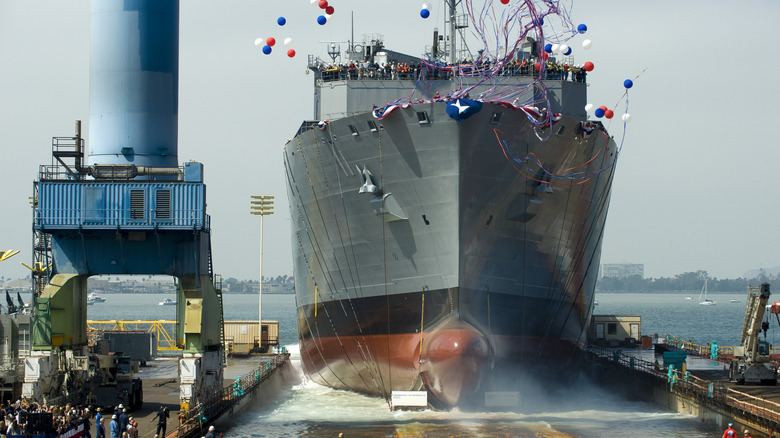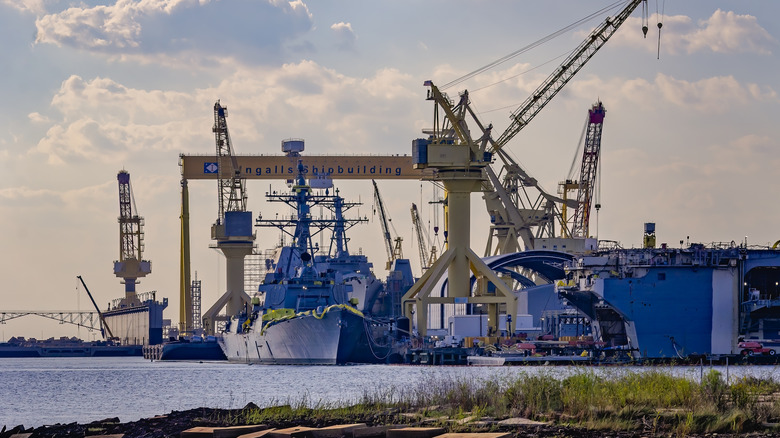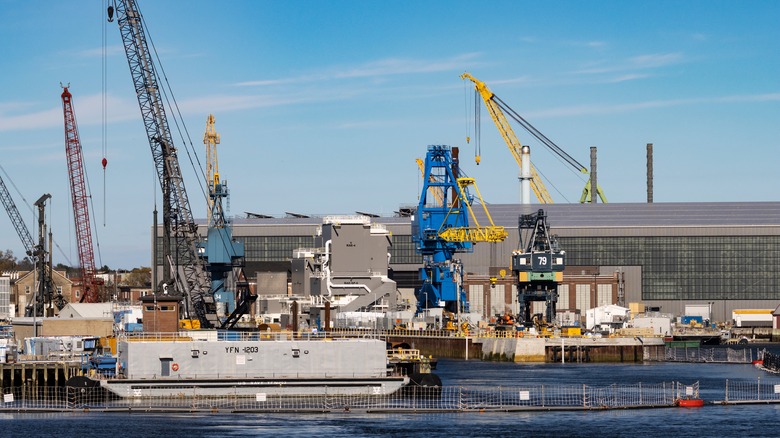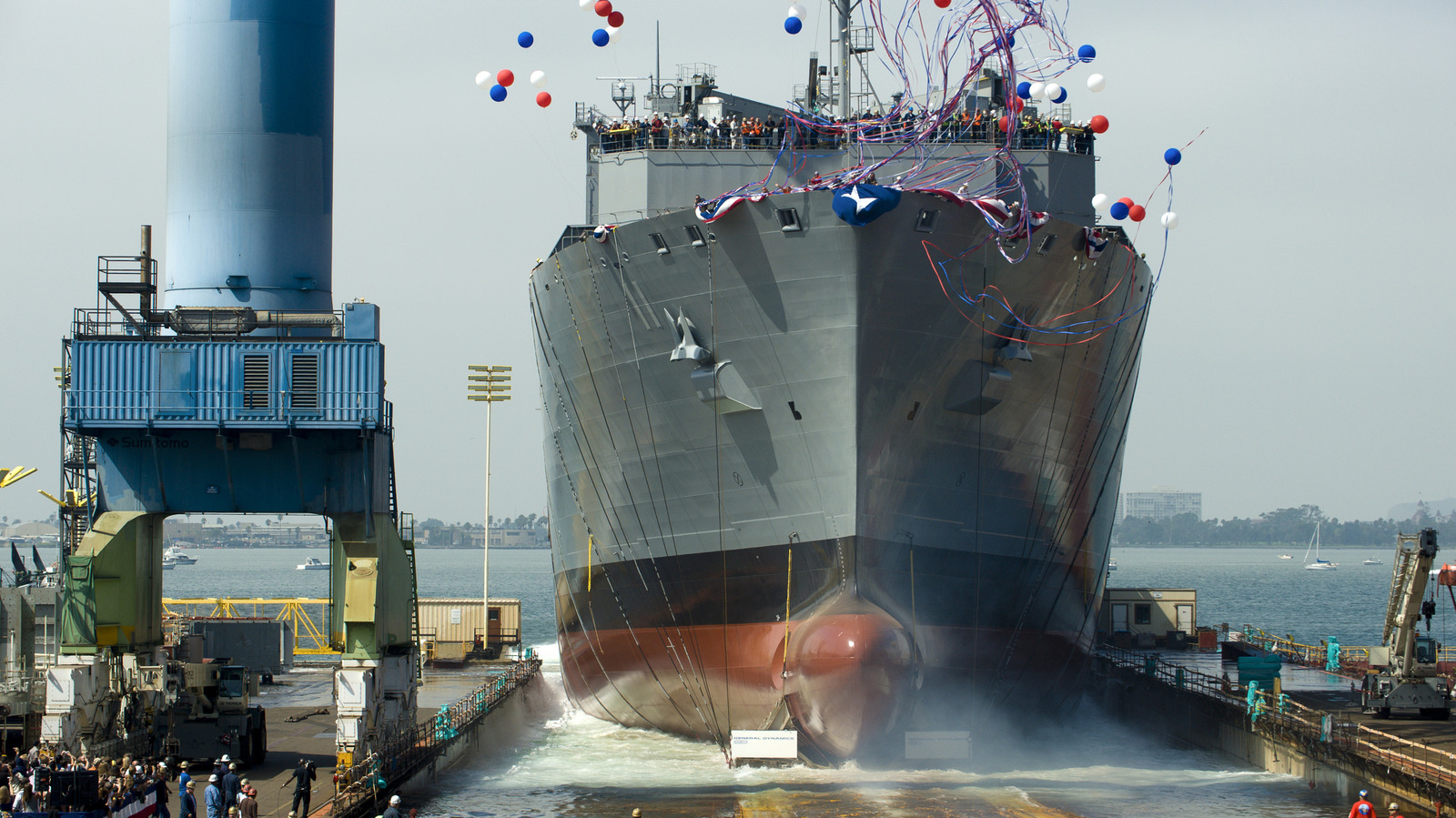 Reed Kaestner/Getty Images
Reed Kaestner/Getty Images
The United States operates one of the world's most powerful navies, yet the industry responsible for building America's warships is struggling to attract workers. It's a significant enough concern that US Navy Secretary John Phelan has raised it publicly — and one that carries real implications for maintaining America's fleet strength as China continues to expand its naval power.
Currently, China is the only navy with more ships than the US Navy — at least in terms of modern warships of over 1,000 tons. However, for the full picture, we need to consider the capabilities of the fleets. Generally, the more advanced capabilities of American destroyers, cruisers, and aircraft carriers (including the USS Gerald R. Ford — the Navy's most lethal warship) all help to negate the numerical deficit. That being said, China continues to add to its fleet, and history is not always on the side of even technologically advanced but smaller navies. A point corroborated in a recent study published by the US Naval Institute website, which concluded that 25 out of 28 naval wars were won by the fleets with the greatest numbers of ships.
Against this backdrop, the recent statement by the US Navy Secretary that it's hard to attract shipyard workers is even more worrying. The main problem identified by Phelan is that of pay. Speaking at a defense summit in Fort Wayne, Indiana, he said, "I think this is an issue of wages to be honest." He went on to say that shipbuilders struggle to attract workers when they can make the same money working for Amazon or Buc-ee's.
Just how big is the wage problem in US Naval shipbuilding?
 Carmen K Sisson/Getty Images
Carmen K Sisson/Getty Images
Doing a side-by-side comparison of wages across industries isn't straightforward; wages are almost always dependent on the role's responsibilities. However, we can get an idea of the concerns by comparing the salary of a shipyard welder against an "average" Buc-ee's or Amazon worker. According to ZipRecruiter, shipyard welder salaries vary by state, with the lowest being in Florida with an hourly rate of $19.34, the highest wages are in Washington, where the average hourly wage for the same job is $29.31.
For comparison, Buc-ee's wages begin at $18 to $21 per hour for "associate" level employees, with team leads getting between $21 and $24, with department managers between $31 and $33 per hour. For Amazon, we can look at "fulfillment and transportation workers" wages. The company recently announced that US-workers in this sector would see their pay increased to $23 per hour. Amazon also notes that when benefits and incentives are included, the "average total compensation" exceeds $30 per hour.
While these figures all remain roughly in the same ballpark, there is also another consideration. Shipyard roles demand far more than a typical retail or warehouse shift. A typical shift can involve welding in confined spaces, working at height, and handling heavy steel in hot, noisy, and often hazardous conditions. It's a physically demanding job that requires technical training and long apprenticeships. When compared with jobs offering similar wages for safer, cleaner, and less-demanding roles, it's easier to understand why the top manufacturers of US Navy ships are struggling to attract and retain staff.
China's overwhelming shipbuilding capacity advantage
 Kate Scott/Shutterstock
Kate Scott/Shutterstock
The drought of workers in US Naval shipyards is all the more worrying when considering the size of China's Navy and its current shipbuilding output. According to an analysis published by the Center for Strategic and International Studies (CSIS), China's shipbuilding industry is now so large that it's estimated it can outbuild the US by a factor of 230. This is primarily why the Chinese Navy now outnumbers America's, but also why it's more modern. A massive 70% of Chinese navy ships were built after 2010, the figure drops to 25% for US Navy ships.
More importantly, China's shipyards have the capacity to keep expanding at a pace the US can't currently match. In fact, in 2024, China was responsible for over 50% of the world's shipbuilding output, with the state-owned China State Shipbuilding Company producing more tonnage in one year than the entire US shipbuilding output since the end of World War two. Although this figure is for commercial vessels, it still ably demonstrates the point.
Bearing this in mind, it's easy to see why the Navy secretary is worried. He argues that the first step is to raise wages so that they genuinely compete with the likes of Amazon and Buc-ee's. This alone won't solve the issue, but it's essential for attracting and retaining a skilled workforce. Other steps that have been proposed to ease the crisis include better training, improved working conditions, affordable housing, and increased benefits. Such measures will be essential if America hopes to reverse its shipbuilding decline.


